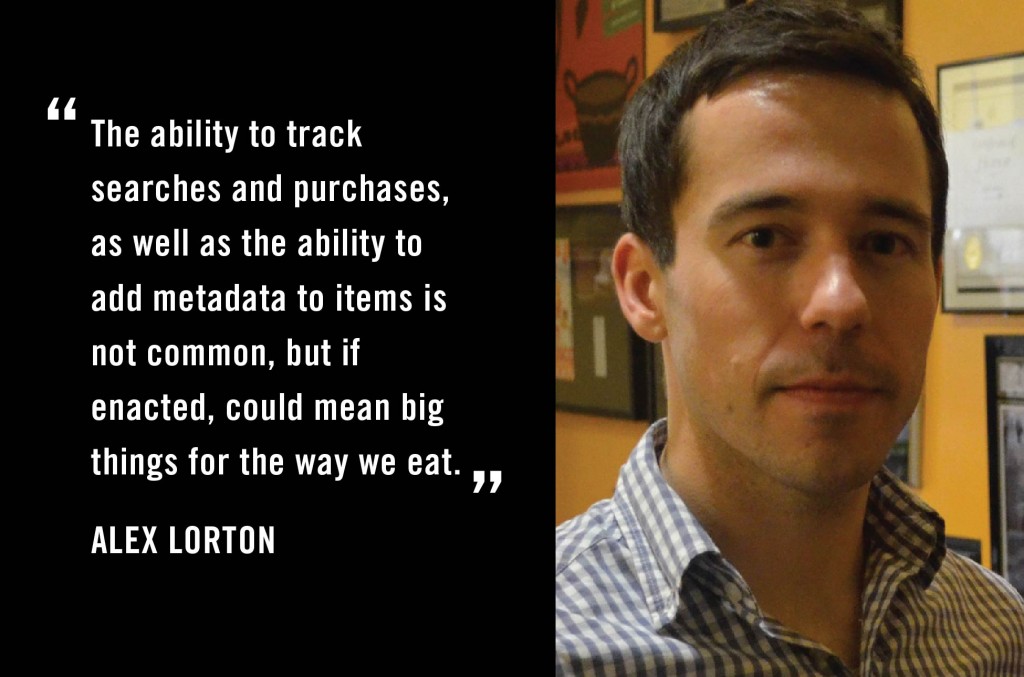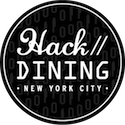Guest post by Alex Lorton, co-founder, Cater2.me. The views expressed here are solely those of the author and do not reflect the views of Food+Tech Connect.
Tech giants such as Amazon and Zappos have spent immense resources perfecting algorithms designed to track customer preferences and predict what items they would like to buy based on previous searches and purchases. After recently purchasing a soccer ball and pair of soccer shorts, my Amazon home page was filled with suggestions about other soccer and sports related purchases, suggesting items based on what I might like and based on what others who had purchased similar items also bought.
Understanding a customer’s preferences and giving them targeted suggestions is a staple of effective eCommerce, but the same cannot be said for dining. For an area of commerce as replete with options and as heavily influenced by personal preference as food, designing and implementing systems for serving targeted suggestions is a huge potential opportunity.
eCommerce sites have two primary features that allow their preference algorithms to work: the ability to track consumer searches and purchases and the ability to add metadata to the items that they sell. For instance, when I am logged into my Zappos account and search for brown boots, the site records this search. If I purchase a particular brand in a particular size, these aspects are also recorded. The next time I shop, I’m sure to see other products that have been determined to be similar or complimentary to my past purchases as each item is tagged for size, color, brand, style and so on.
In the dining world, the ability to track searches and purchases, as well as the ability to add metadata to items is not common, but is something that if enacted, could mean big things for the way we eat. Dining that takes place through websites or apps is ready and able to take advantage of preference algorithms. When ordering through a delivery service, the consumer completes searches and makes purchases and the service offers a variety of food items ready to be tagged with metadata. If I order a yellowtail jalapeño roll from a sushi restaurant, the system should be able to infer that I have a predilection for spicy food and for fish. The next time I login, I should see other suggestions for items or restaurants that match those tastes. In my business, Cater2.me, where we serve corporate customers, we track feedback given on meals and individual dishes and use that information to determine what other sorts of meals they like. If they have responded that they like meals that could be classified as healthy, we’ll serve them more healthy meals. If they show an interest in spicy dishes, we’ll up the heat for the next order.
The big question that remains is how this all applies to the real world, where consumers don’t “login” when they sit down at their table. How can we hack the real world dining experience of getting targeted suggestions, based on past purchases and culled from your preferences, when we’re at a table, looking at a menu? Technology can help us to achieve this end at a variety of different points. Before even sitting down at the table, services like OpenTable can suggest restaurants we might like by looking at the restaurants where we’ve booked reservations in the past and potentially can suggest dishes if they integrate menu data and ask what we’ve liked from past dining experiences. Once we’re at the table, restaurants can make use of menus on touch screen devices to ask consumers to login, or simply to answer a few questions about their preferences that would then show dishes that they may have a preference for. After the meal, a simple question about whether or not they liked the dish can capture the information necessary to show future diners what others have liked who have selected similar preferences.
One potential stumbling block to making this sort of preference algorithm work well for food is the subjectivity of many of the dimensions upon which the dishes would be parsed. A dish that is spicy to some may be bland to others just as a “healthy” dish to one person might be completely wrong for someone with a different definition of what healthfulness is. However, just like standards were created for, say, shoe or pants sizes, measures of objectivity can be added to food as well. The addition of nutrition information and ingredients in food (e.g. inclusion of a ghost pepper would qualify a dish as spicy, whereas a dish that’s 30% butter would not qualify as healthy) can help to establish a variety of set objective measures.
Whether dining out or eating in, we can target a very tasty future of dining by focusing on preferences.
Hacking Dining is online conversation exploring how we might use technology and design to hack a better future for dining. Join the conversation between June 2-30, and share your ideas in the comments, on Twitter using #hackdining, Facebook, LinkedIn or Tumblr.
____________________
 Alex Lorton is the co-founder of food & technology startup Cater2.me. Lorton graduated from The Wharton School at the University of Pennsylvania before working as a consultant with Oliver Wyman in New York. He co-founded Cater2.me in San Francisco in 2010 and moved to New York, where he currently resides, to open that office.
Alex Lorton is the co-founder of food & technology startup Cater2.me. Lorton graduated from The Wharton School at the University of Pennsylvania before working as a consultant with Oliver Wyman in New York. He co-founded Cater2.me in San Francisco in 2010 and moved to New York, where he currently resides, to open that office.




